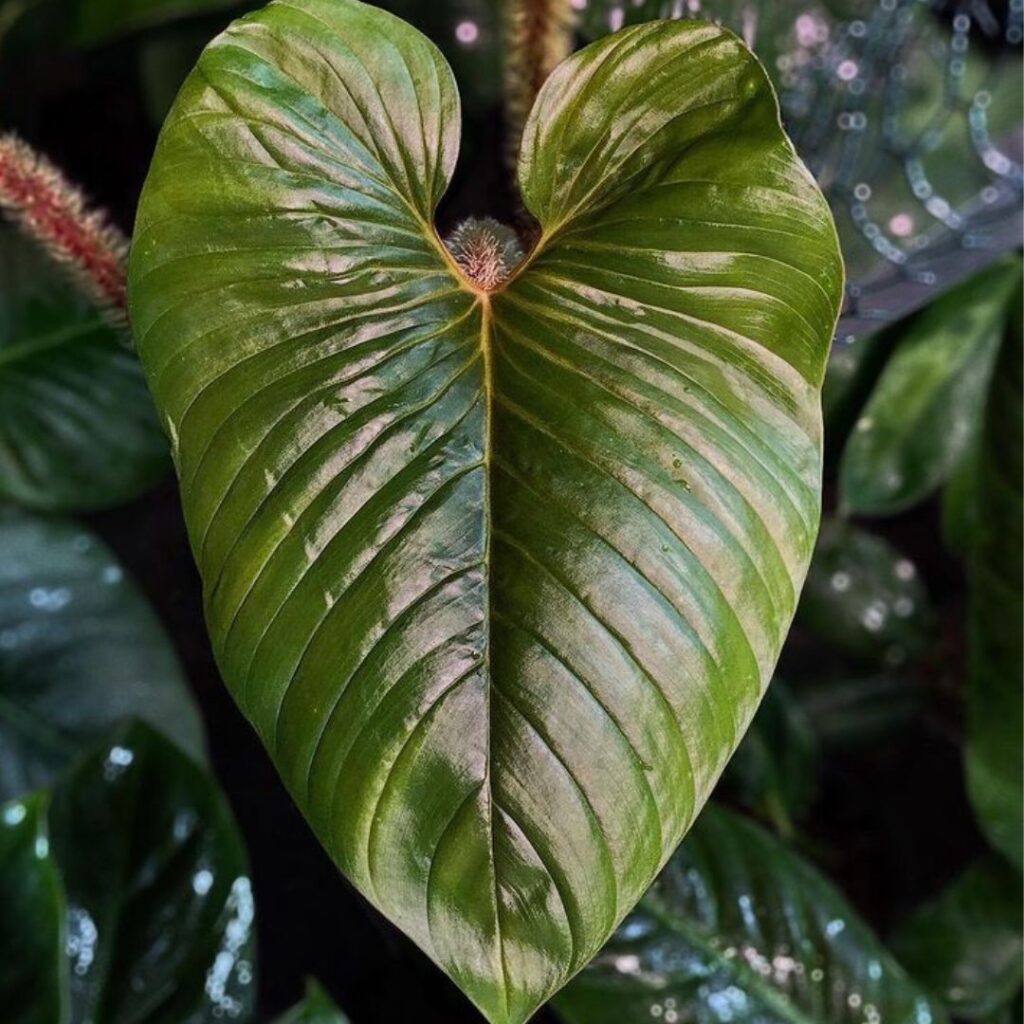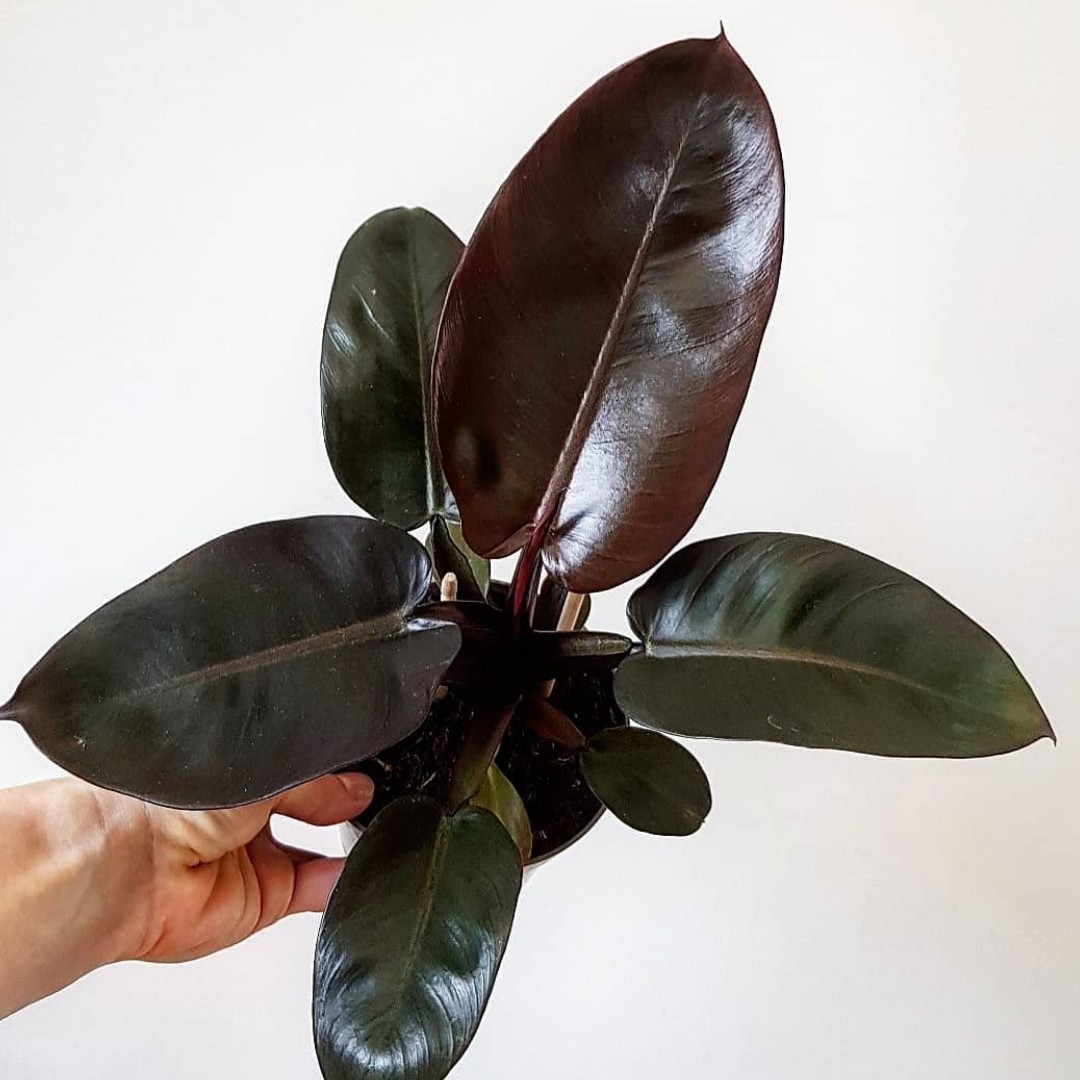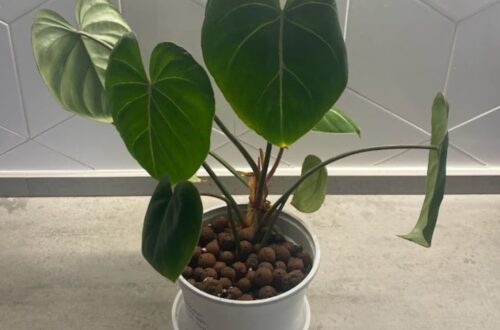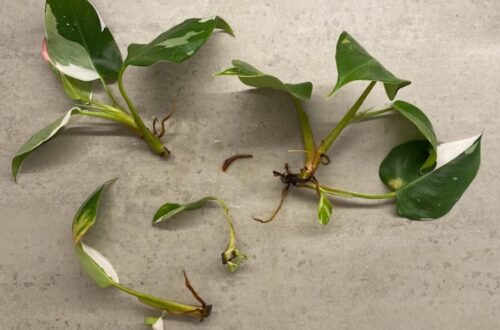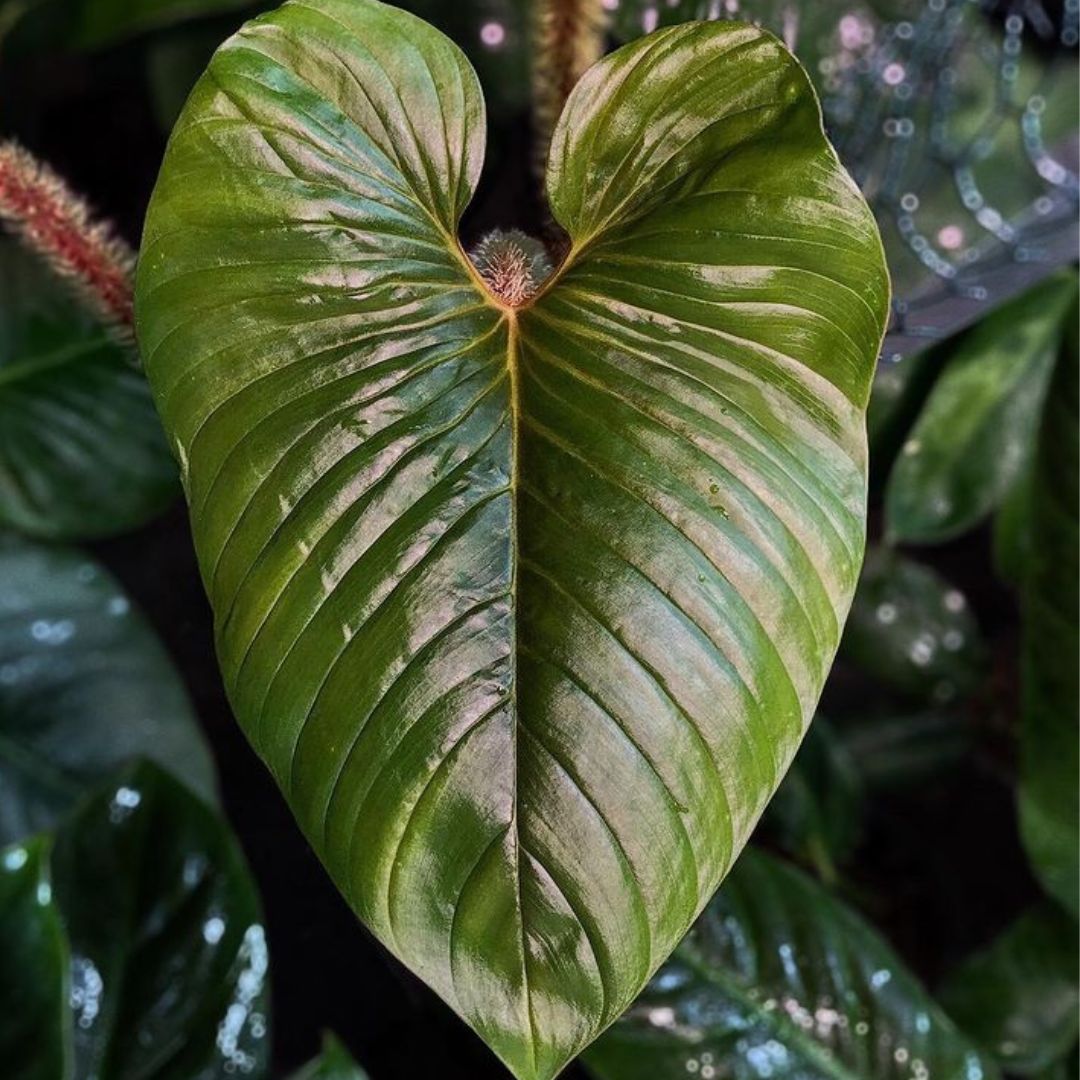
Philodendron Serpens
The key to philodendron serpens care is to keep the soil slightly moist without overwatering it and give it bright indirect sunlight but not direct sun. We cover all you need to know about care and propagation…
Philodendron Serpens Care Summary
| Light needs: | Bright indirect sunlight. |
| Watering needs: | Check weekly, water when top 50% of soil is dry. |
| Fertilizer: | In the spring and summer use a balanced fertilizer every 2 months. |
| Soil: | A well draining soil and perlite mix. |
| Humidity: | 60%. |
| Temperature: | 21-29°C (70-85°F). |
| Where to buy: | Try our list of Rare Plant Shops. |
| Common issues: | Overwatering and pests. |
Introduction
The Philodendron Serpens originated from South Africa. It can be found naturally in the wild from Columbia to Ecuador. Its light green heart-shaped leaves, deep veining, and green hairy stems give the philodendron serpens a striking appearance. This plant has sophisticated leaves and unique furry stems that make them an eye-catching piece for your indoor plant collection. This plant can grow very large leaves and is low-maintenance. This plant is a climbing plant so it would be best to provide it with a moss pole to latch onto.
See also: Philodendron Soil, Philodendron Paraiso Verde Care, Philodendron Pastazanum Care, Philodendron Mccolley’s Finale, Bloody Mary Philodendron, Philodendron Mamei Care.
Philodendron Serpens Light Needs
A higher amount of bright, indirect sunlight will ensure bright green leaves and larger growth as well. However, it doesn’t need a huge amount of light, or direct light because in its natural habitat, this plant will be growing under the foliage of large trees. The light green leaves of this Philodendron can be fragile when met with hot, direct light, so make sure to keep this plant in a shady area if you do decide to put it outside for the summer.
How Often To Water
Moist, but not drenched, soil is the way to go. For the Philodendron Serpens, wait until the top two inches of soil are dry. Stick a finger in to make sure before watering. Around 50% of the soil should be dry before watering. The entire length of your finger should not have any soil sticking to it when you remove it. If it does, the soil is not completely dry to the depth of 2 inches and you should wait a few more days before watering. Wait for your plant to give you a sign it needs water. If the leaves begin to droop, or the pot feels much lighter when you lift it, this is a good sign you should give your Philodendron Serpens a good soak. The soil should be moist but not water-logged.
Tip: Let the soil mostly dry out before watering again, they can get root rot relatively easily. Make sure all water drains out of the pot after watering before putting it back in its external pot or saucer.
Fertilizer
This plant does not require much fertilizer and will react badly if you do over-fertilize. In the spring and summer use a balanced fertilizer every 2 months. A slow release fertilizer is preferred so that the plant is not overwhelmed all at once when you dose it.
Philodendron Serpens Soil
A basic aroid mix that is well-draining will work perfectly for this Philodendron. The soil should not retain too much water or stay wet for too long. It is better to under-water a Philodendron rather than over-water it. This plant will tell you when it needs water. If the leaves begin to droop, or the pot feels much lighter when you lift it, this is a good sign you should give your Philodendron Serpens a good soak. The soil should be moist but not water-logged.
For more on Philodendron soil see our guide on what to buy or how to make your own: Philodendron Soil.
When to Repot
If you find that your Philodendron Serpens is root-bound, which means that the roots have encapsulated the entirety of the soil inside the pot, then you’ll want to repot. You’ll be able to tell if your Philodendron Serpens is root bound if there are roots coming out of the pot or if the leaves just aren’t growing as large or as quickly as before. Another reason to repot would be to give the plant fresh soil, especially if you find your current soil to be problematic. Only go up slightly in pot size when you repot.
For more on philodendrons see our philodendron category with all our philodendron care guides.
Philodendron Serpens Humidity
The best humidity for the Philodendron Serpens is a high amount above 60%. It is native to a very tropical, high humidity location and it has adapted to love moist air. When you provide the plant with a higher amount of humidity, you’ll definitely notice a difference in the way the plant looks. The leaves will grow larger, and the stems may be more fuzzy. If you have a small collection, you can place your Philodendron Serpens on top of a tray of pebbles and water to increase humidity. If you have a bigger collection, investing in a great humidifier is a must. Although humidifiers can be pricey, your plants will thank you and reward you with gorgeous growth.
Temperature
This Philodendron will enjoy warmer temperatures between 70-85 degrees fahrenheit (21-29 degrees celsius). Only place this Philodendron outside if the temperatures stay above 65 degrees fahrenheit or 18.3 degrees celsius.
How to Propagate
As with other Philodendrons, you can take cuttings of nodes and place them in your favorite propagation medium: water, sphagnum moss, or perlite. I would take a cutting and let the wounds heal over for half a day to reduce rot, then put it in water for a month, then move it to soil once it has started to root.
Is It Toxic To Cats?
They are toxic to cats if eaten, so seek vets advice if your pet eats any as they can get vomiting and other symptoms.
Is It A Climber Or A Crawler?
The philodendron serpens is a climbing philodendron.
Philodendron Serpens USDA Zone
Zones 10-12. They are an indoor plants for most homes.
Philodendron Serpens Vs Squamicaule
These plants are very similar, the squamicaule has redder stems, and the serpens has browner stems. The squamicaule is hairy all the way up to the leaf and even under the leaf, the serpens is fuzzy but it stops before the leaf.
Where To Buy
Try our list of Rare Plant Shops.
Philodendron Serpens FAQ’s
- The Philodendron Serpens is not safe for people or pets due to the presence of calcium oxalate crystals that can damage the throat and cause a reaction.
- The Philodendron Serpens is named this way because the angle of the leaf and stem resembles a snake that is about to strike.
Common Pests, Issues, and Treatments
If your leaves are curling or drooping, this could mean that you have over-fertilized or need to water your plant. Check the soil or remember if you recently fertilized it. If you did recently fertilize it and your plant is not enjoying the extra nutrients, you can just flush out the soil with water to remove as much as you can. If the problem persists, replace the soil as nutrients can build up and cause burns to the plant.
For Philodendron Serpens, the most common pests are mealybugs and thrips. Mealybugs look like a fuzzy white bump stuck to either the stem or the leaf of your plant. Thrips are much harder to see as they show up as small dark slivers. You’ll likely see the damage from thrips before you see the insect themselves. To treat both of these, wipe down the leaves and the stem with a diluted mixture of neem oil and water. This will kill thrips. If you see mealybugs, you can remove these by hand or with a q-tip.
Additional Resources
Buy: we recommend a digital thermometer hygrometer (amazon affiliate link) to measure humidity.
Other Articles You Might Like
There you have it, here ends our guide to this beautiful plant. You might also like our other articles:
Philodendron Soil, Philodendron Paraiso Verde Care, Philodendron Pastazanum Care, Philodendron Mccolley’s Finale, Bloody Mary Philodendron, Philodendron Mamei Care.
Please follow us on Instagram and Pinterest for regular plant updates and occasional plant giveaways.
